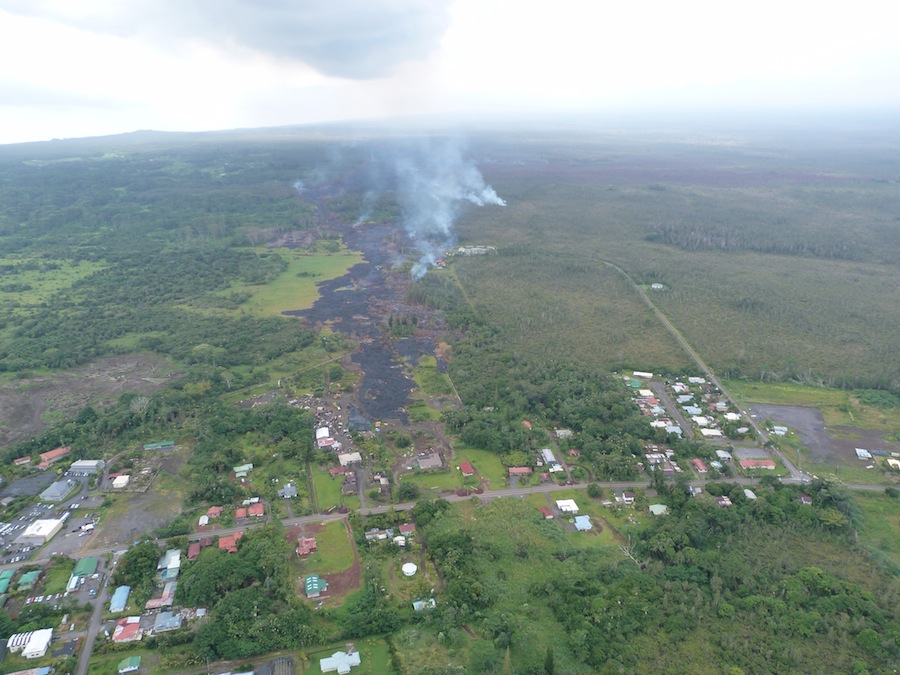Lava Sets Home on Fire in Hawaii (Video)

A stream of lava from Hawaii's Kilauea volcano has been creeping toward a small town for months, and yesterday (Nov. 10), the molten rock finally ignited its first home.
The empty house in the village of Pahoa was set ablaze just before noon local time (5 p.m. EST), according to the U.S. Geological Survey's Hawaiian Volcano Observatory.
Kilauea volcano on Hawaii's Big Island has been continuously erupting for more than 30 years. [See photos of the lava flowing from Kilauea]
This particular lava flow started oozing on June 27 from the Pu'u O'o crater, which is part of Kilauea's East Rift Zone, and the flow now stretches about13 miles (21 kilometers). Last month, the stream of molten rock picked up speed. It burned through open fields and buried grave markers in a century-old Buddhist cemetery in Pahoa. It consumed an empty farm shed and set fences and tires ablaze.
The leading edge of the flow hasn't gained ground since Oct. 30; it remains stalled about 500 feet (150 meters) away from Pahoa Village Road. But emergency responders have been watching several active breakout streams of lava that have branched off from the main flow. One of these breakouts crossed into a resident's property yesterday morning and set the home on fire.
Firefighters who were watching for wildfires let the home burn, while a relative of the homeowner recorded the destruction with an iPhone, the Associated Press reported. The building was reportedly 1,100 square feet (100 square m) and is estimated to be worth about $200,000.
Many Pahoa residents have already evacuated, and geologists and public safety personnel continue to keep a 24-hour watch on the lava flow.
Sign up for the Live Science daily newsletter now
Get the world’s most fascinating discoveries delivered straight to your inbox.
Fire isn't the only danger emergency officials need to worry about. Smoke was blowing toward the Big Island's Leilani and lower Puna areas. Hawaii's Civil Defense Agency warned that smoke conditions may worsen, and it has advised residents with respiratory problems to take necessary precautions and to remain indoors.
The lava, which can reach temperatures higher than 1,650 degrees Fahrenheit (900 degrees Celsius), has also been setting off explosions, as the burning vegetation releases methane and then that gas ignites. The bursts have ranged from "small puffs to loud cannonlike blasts," according to the Hawaiian Volcano Observatory.
The Pahoa home is hardly the first casualty of Kilauea's continuous, three-decade eruption. Since 1983, lava from the volcano has consumed some 200 structures, including the Hawaii Volcanoes National Park visitor center at Wahaula, the Royal Gardens subdivision, and many homes and buildings in the town of Kalapana.
Earlier this month, President Barack Obama signed a disaster declaration to provide federal assistance for emergency response efforts to deal with the June 27th lava flow, which include the repair and restoration of alternate routes in and out of the affected areas. State officials say they also have to accommodate about 900 schoolchildren who will be displaced by the lava flow.
Follow Megan Gannon on Twitter and Google+. Follow us @livescience, Facebook & Google+. Original article on Live Science.










